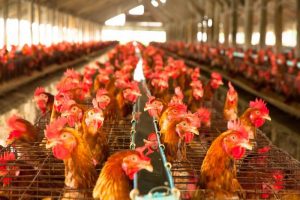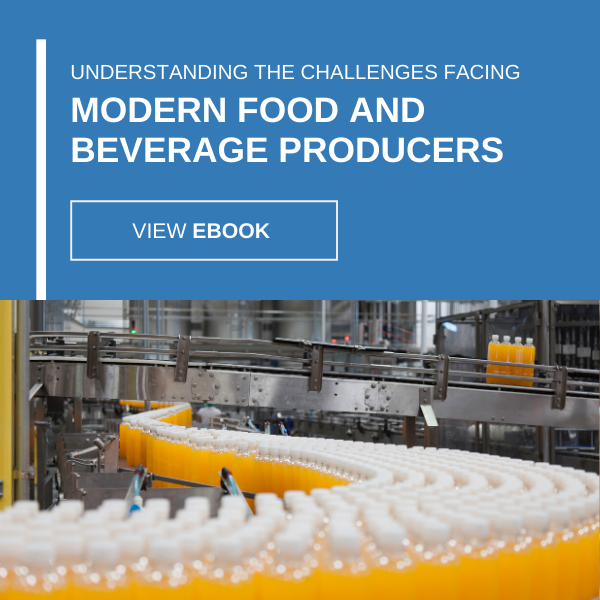
Food and Beverage Trends Impacting Your Bottom Line
The food and beverage space continues to evolve in response to consumer demand, production innovation, and resource availability. Numerous sea changes are poised to unfold in 2018, nearly all of which will affect producers’ bottom lines. Here are some of the impactful trends taking hold within the food and beverage arena over the next several months:
Cellular agriculture
In recent years, food and beverage makers have embraced unorthodox production methods in an effort to engage increasingly conscious customers who not only demand healthy, all-natural food products but also prefer vendors that use sustainable processes.
In June 2017, the market intelligence firm Ipsos Research collaborated with Coast Packaging Company to conduct a nationwide study on consumer attitudes toward sustainability in the food and beverage sector. Approximately 42 percent of respondents attested to caring about “minimally processed” food items more than they did five years earlier, while more than one-quarter expressed interest in producers whose methods reduce food wastage.
These attitudes have forced producers to re-evaluate their workflows and have led to the creation of experimental food production methods, the most notable being cellular agriculture. This strategy involves engineering products in laboratories via cutting-edge bioengineering and tissue-engineering techniques that enable the creation and manipulation of cell cultures. Innovators in the space have been able to “harvest” virtually every food product using cellular agriculture, including animal products such as meat, dairy, and eggs, along with vegetables, according to Quartz. Early successes show the methodology holds transformative potential in an environment where available agricultural land continues to shrink, according to the Food and Agriculture Organization of the United Nations. Of course, cellular agriculture also opens the door to increased sustainability, allowing producers in the U.S. to take pressure off the more than 408,000 hectares of land they currently control and produce their products within controlled laboratories, according to the Organization for Economic Cooperation and Development.
However, brands have yet to convince consumers to embrace products created through cellular engineering. Messaging surrounding the topic will take shape throughout 2018, as advocates attempt to promote the natural roots of the process while opponents fight back by labeling the resulting food items “lab-grown.” Should the former group win the marketing battle, producers could find themselves making room in the budget for investments in cellular agriculture.
Food safety
Consumers weathered multiple food safety breakdowns last year and are currently under threat from an international E. coli outbreak linked to tainted romaine lettuce, according to the Centers for Disease Control and Prevention. The bacteria-ridden vegetable has sickened more than 180 people across Canada and the U.S., and caused two deaths. This is not uncharted territory. Last year, the CDC conducted eight large-scale investigations addressing bacterial outbreaks related to food production.
These very public food safety problems have put consumers on edge. Chipotle’s recent struggles evidence increased public awareness of such issues. The restaurant chain suffered a massive E. coli outbreak during the fourth quarter of 2015 and has yet to re-establish its footing in the marketplace, despite mitigating the immediate problem in February 2016, instituting new quality control methods and investing in an aggressive rebranding campaign, CNN reported. In short, consumers are not as willing to trust food and beverage brands with black marks on their safety records, no matter what post-outbreak changes are made.
Food and beverage firms must keep this in mind as they navigate the market in 2018. They must ensure their safety processes and fail-safes are in place and compliant with modern production standards. A single slip-up could wreak long-term budgetary havoc.
Changing regulatory tides
A number of federal authorities have signaled that various regulatory changes affecting the food and beverage space could unfold in 2018, the most prominent being the U.S. Department of Agriculture’s potential repeal of the Organic Livestock and Poultry Practices proposed final rule, according to Lexology. On Dec. 18, the agency published an external communication requesting public comment on new guidance that would withdraw the rule, which would require organic livestock companies to refine their handling and slaughter methods to make them more animal-friendly. The OLPP was scheduled to go into effect March 30, 2018, but the USDA has since pushed the implementation date back to May 14. However, the agency is unlikely to allow the rule to take effect.
Farmers are divided on the decision. While some appreciate the USDA’s push to reduce regulations, others are concerned that lowering standards for animal welfare will anger customers, an increasingly large number of whom consider ethical farming practices paramount.
In addition to grappling with the recent OLPP decision, food and beverage producers are still digesting the U.S. Food and Drug Administration’s decision to discontinue the Food Advisory Committee. The group, established in 1992, dissected national nutrition and food safety trends, until Dec. 12 when the FDA announced that it was not renewing its charter. The agency cited inactivity – the FAC had not held an official meeting since 2015 – as the impetus behind the move.
Eight days after the FDA publicized its decision, a group of more than 10 public interest groups and seven former FAC members sent a letter to the agency asking it to reactivate the panel, Lexology reported. The FDA has yet to respond.
These developments signal a loosening of federal food and beverage production regulations, possibly laying the groundwork for higher revenues. That said, this approach could also increase operational risk, as producers working without strong guidelines in mind may end up rolling out substandard product that disappoints or, even worse, sickens food-savvy consumers.
With these developments in play, businesses in the food and beverage industry must re-evaluate their back-end and front-end operations to assess their respective levels of preparedness. Firms that need external assistance to effectively undertake these activities should consider connecting with USC Consulting Group. Our management experts can help food and beverage producers of all sizes adjust to the current marketplace and future-proof their operations for tomorrow.







